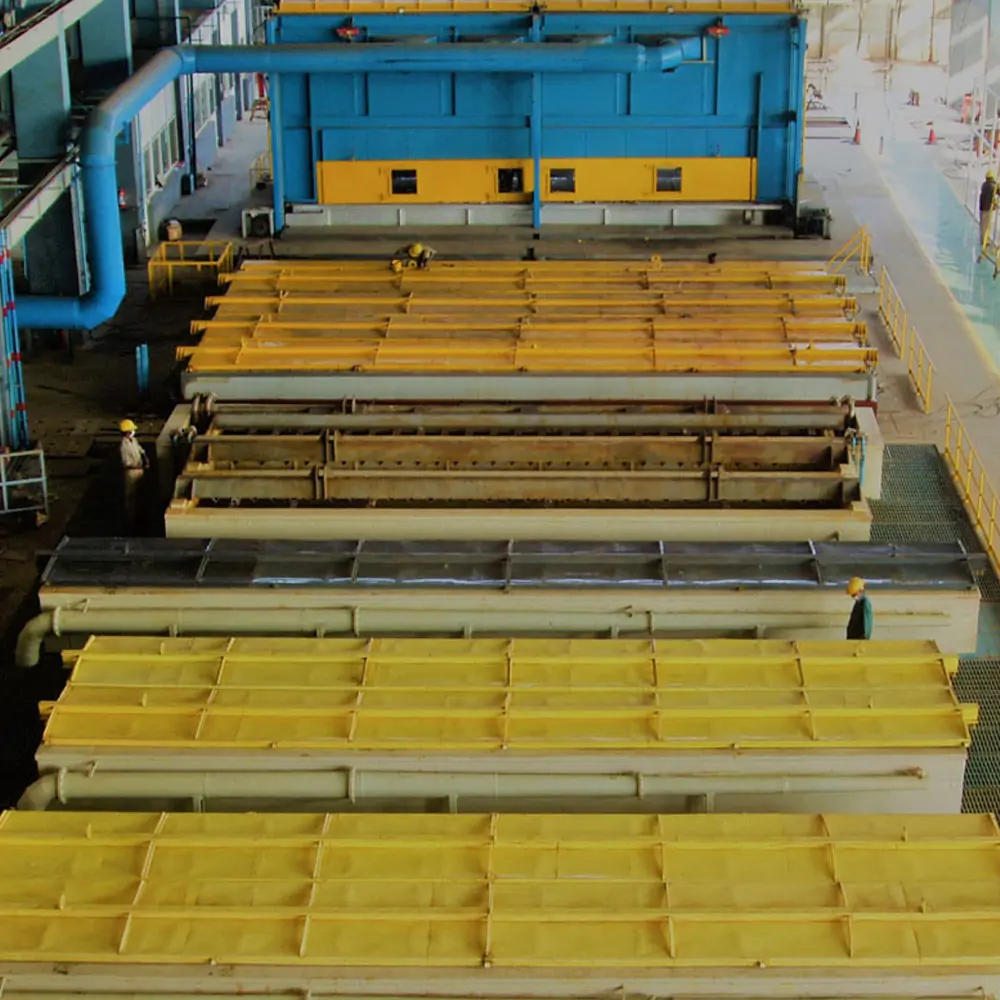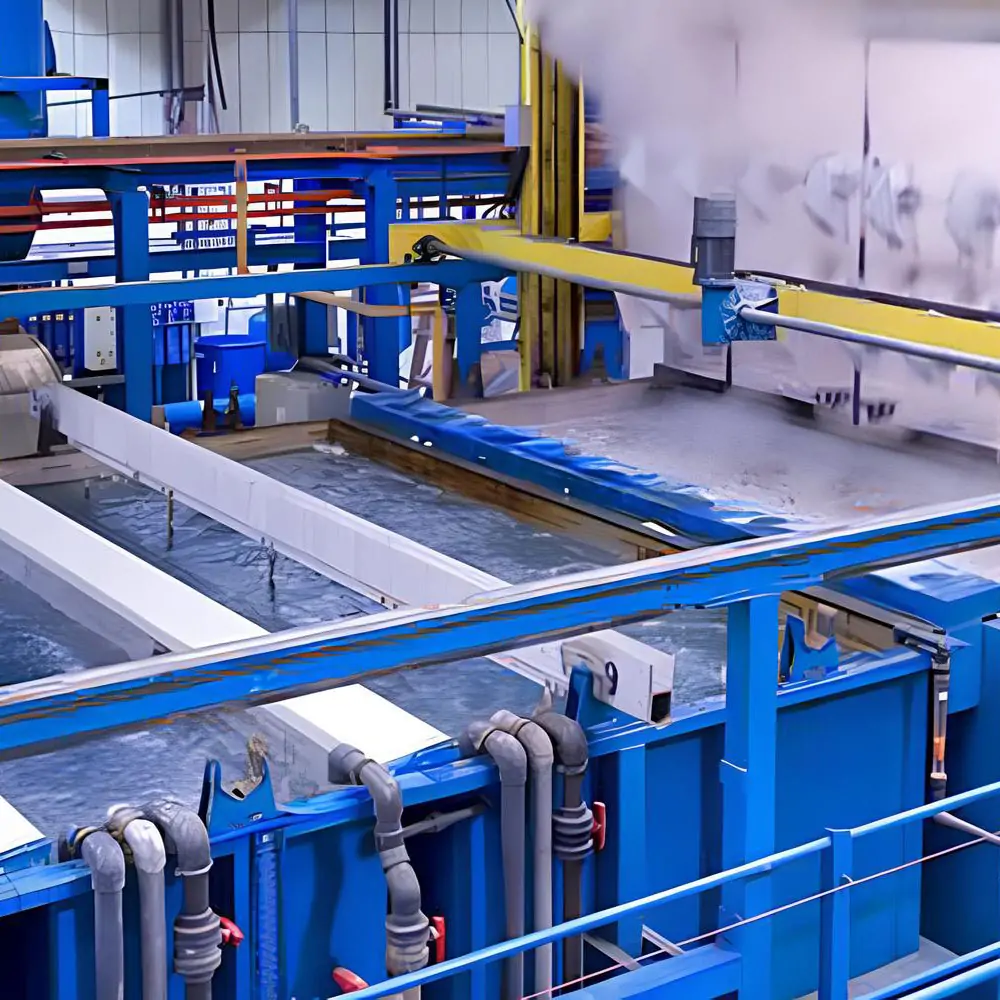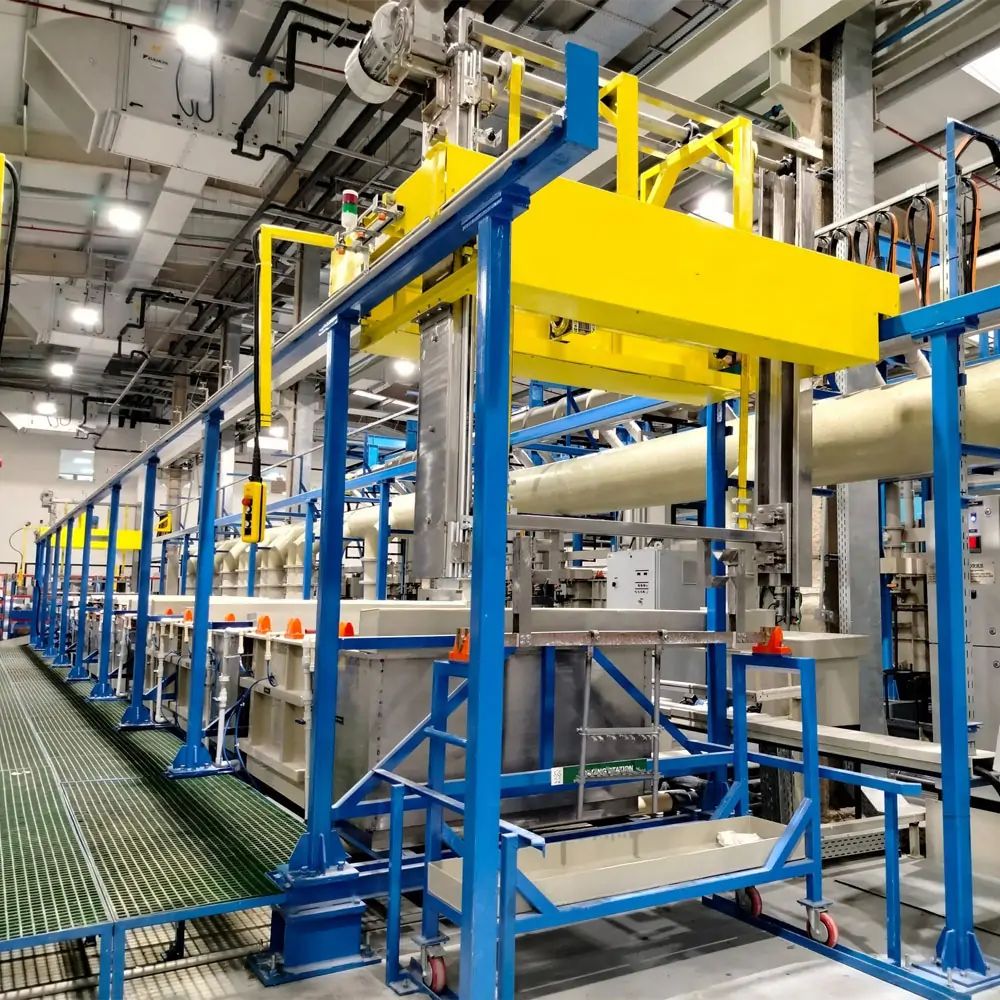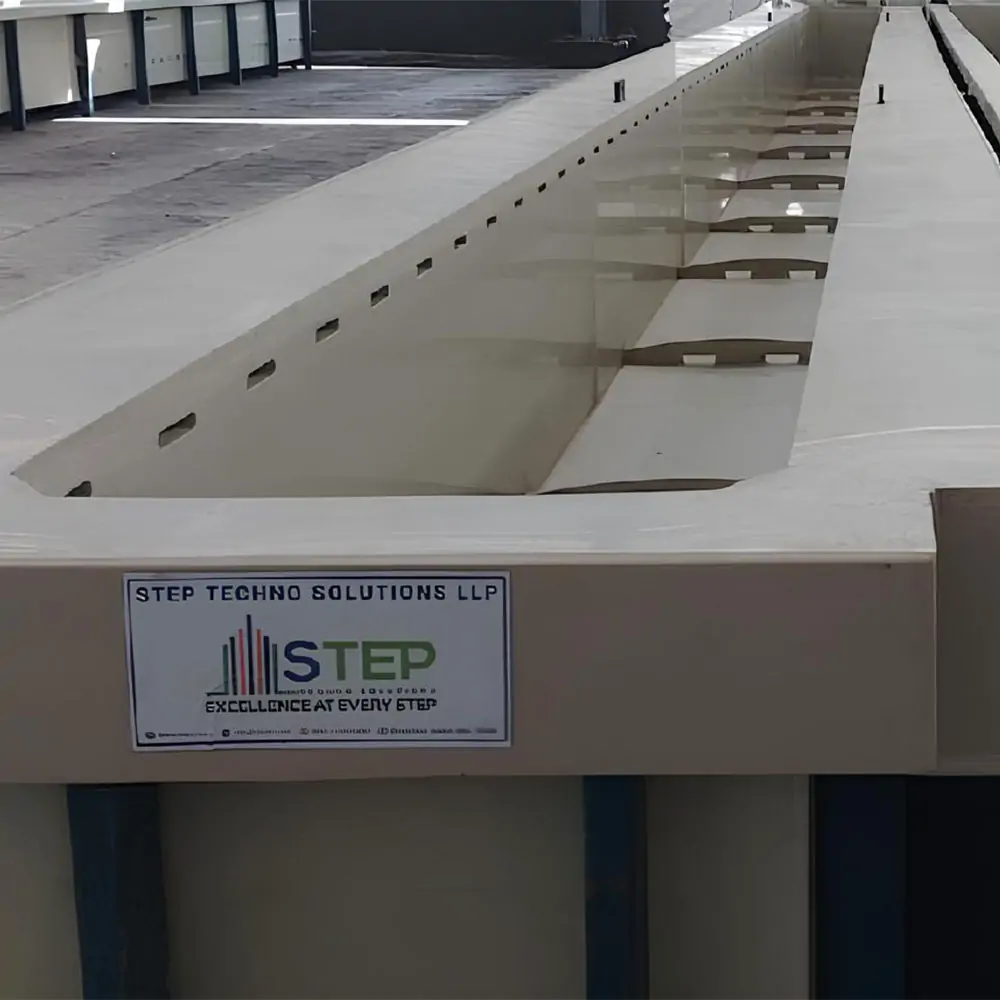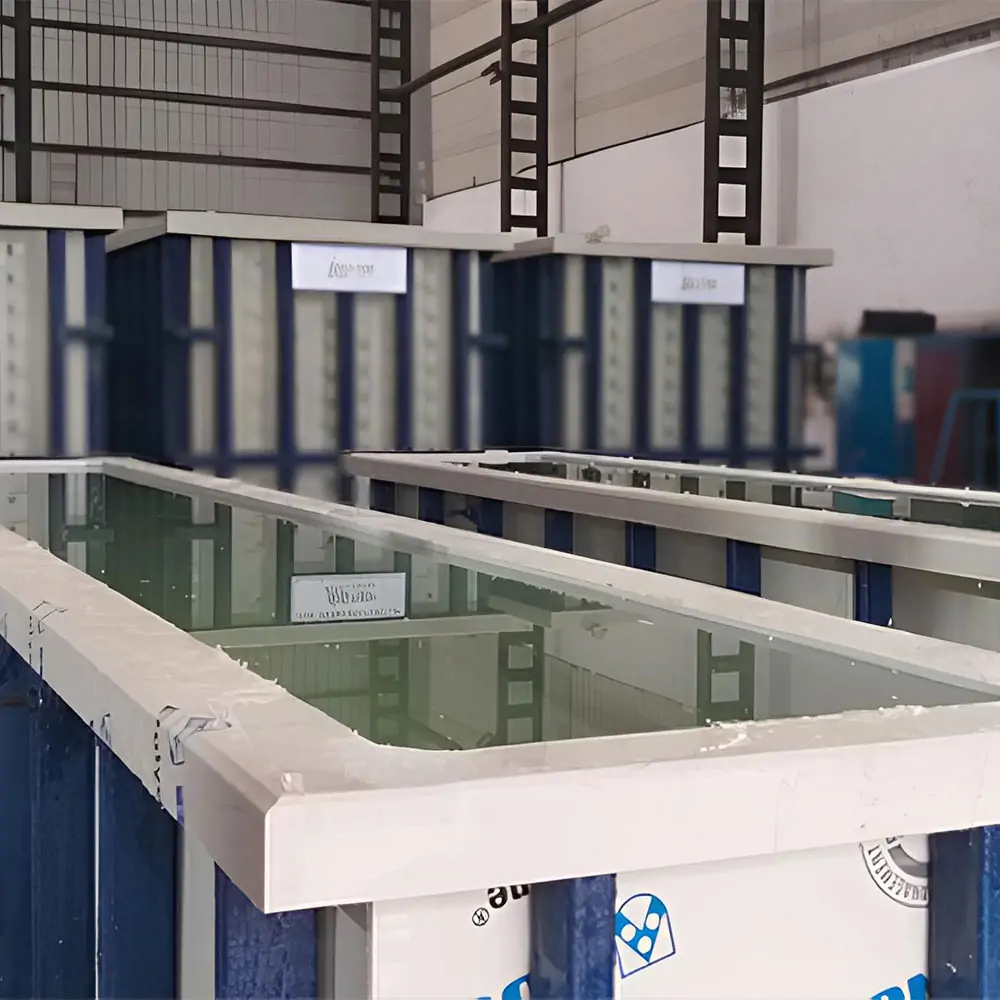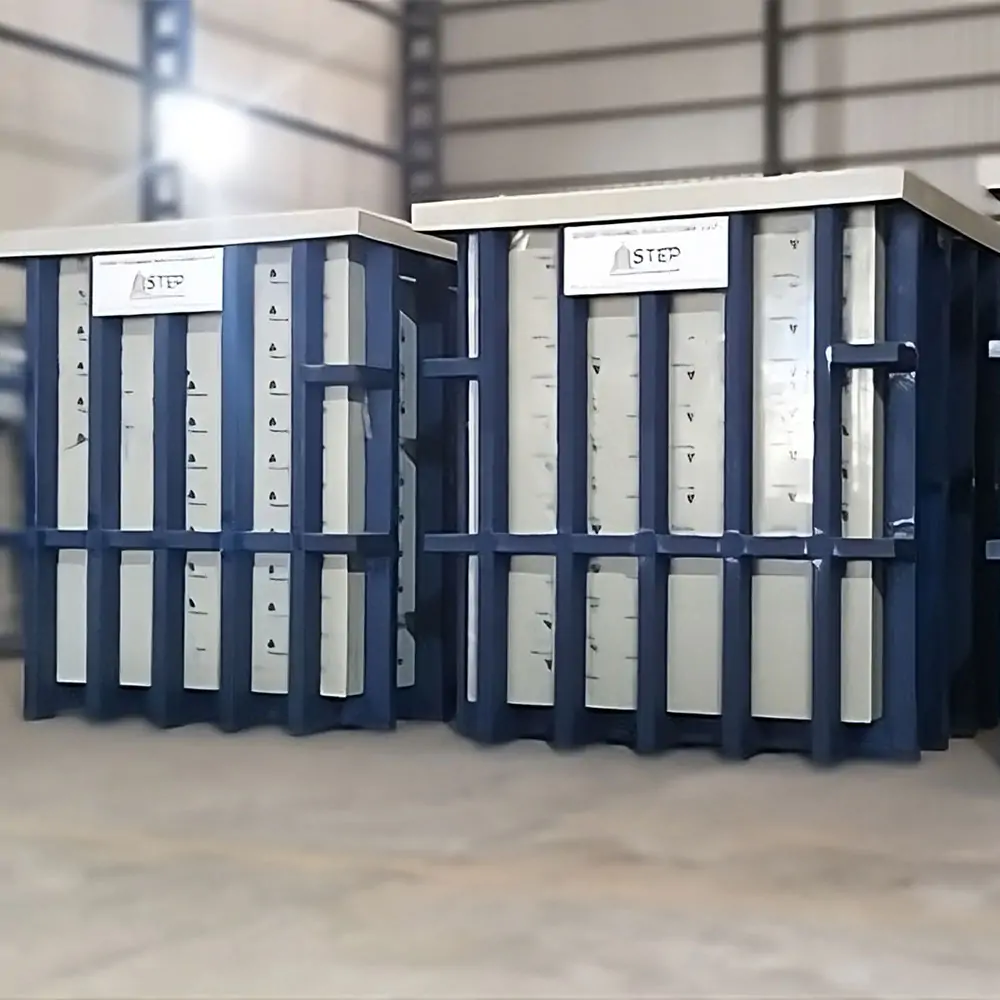The galvanization process is essential for prolonging the life of metal components, especially in industries where metals are exposed to harsh environments. Zinc coatings applied through galvanization act as a protective shield against corrosion, ensuring optimal metal performance over time. At the heart of this process is the zinc galvanizing kettle, which holds and heats the molten zinc to the required temperature. The kettle ensures the proper application of the zinc coating to metal surfaces, forming a durable, corrosion-resistant layer. The efficiency of the zinc kettle directly impacts the quality of the galvanization process, ensuring uniform coating thickness and strong adhesion. In this article, we will delve into the crucial role of the zinc galvanizing kettle, how it operates, and how it contributes to the overall success of the galvanization process, offering lasting protection for metal parts.
Zinc Galvanizing Kettle in the Galvanization Process
Metal components are galvanized by immersing them in a bath of molten zinc, after which a protective zinc coating is put to their surfaces. The zinc galvanizing kettle is an essential piece of this procedure. It is designed to hold and heat zinc to the required temperature, typically around 450°C to 460°C, to ensure it is molten and ready to coat metal parts effectively. The kettle maintains the temperature of the zinc, ensuring the coating is consistent, uniform, and adheres properly to the metal surface.
Zinc is used for galvanization because of its excellent corrosion resistance properties, which make it ideal for protecting steel and iron from rust. The zinc galvanizing kettle plays a critical role in maintaining the molten zinc at the correct temperature and ensuring the metal parts are properly immersed, resulting in a high-quality finish.
Importance of Zinc in the Galvanization Process
Zinc’s specifics chemical characteristics make it an important component in galvanization. It serves as an excellent sacrificial material. When the zinc-coated metal is exposed to corrosive elements like water and air, the zinc corrodes before the underlying metal, protecting the metal parts from rust and degradation. This sacrificial protection is crucial for prolonging the life of metal components, especially in harsh environments like construction, infrastructure, and automotive applications.
The zinc coating also acts as a barrier that isolates the underlying metal from the environment, preventing the direct contact of corrosive elements with the base metal. This is particularly important in industries where metal components are exposed to moisture, saltwater, or extreme weather conditions.
The zinc galvanizing kettle is important in making sure that the zinc is of high quality, devoid of impurities, and heated to the suitable temperature to give a uniform coating for the best protection.
What is a Zinc Kettle?
Explanation of What a Zinc Kettle Is
A zinc kettle is a specialized container used to heat and maintain molten zinc during the galvanization process. The kettle is made of higher-quality, heat-resistant materials and is capable of enduring the high temperatures required to melt zinc. Typically, the kettle is constructed from steel or cast iron, materials that are durable and able to handle the heat load without deteriorating.
Inside the kettle, zinc is heated to a specific temperature, typically between 450°C and 460°C, until it becomes a liquid. This molten zinc is then ready for use in the galvanization process. The zinc kettle is an essential piece of equipment in hot-dip galvanizing, as it ensures the zinc remains at the required temperature for efficient coating application.
How It Is Used in the Galvanization Process
The zinc kettle is utilized to melt zinc, which is subsequently used to galvanize metal components by submerging them in the melting zinc. The metal parts are first cleaned and prepared through a series of pre-treatment processes like pickling to remove oxides and impurities. When ready, the metal components are dropped into a zinc galvanizing kettle, and the hot zinc covers the metal surfaces. The hot-dip process ensures the zinc bonds well with the metal, creating a robust, corrosion-resistant coating.
The kettle maintains the molten zinc at the required temperature to ensure the metal components receive an even coating. Proper immersion time is crucial for uniform coating thickness, and the zinc kettle ensures this consistency by maintaining a stable temperature and controlling the zinc’s flow.
Importance of Maintaining the Correct Temperature in the Kettle
Keeping the perfect temperature in the zinc kettle is important for assuring the quality of the galvanizing process. If the temperature is too low, the zinc will not properly adhere to the metal surface, resulting in poor coating quality. On the opposite hand, if the temperature increases too high, the zinc could heat up and lose its characteristics, which can also harm the coating.
The temperature in the zinc galvanizing kettle needs to be carefully monitored and controlled to maintain the right consistency and quality. Proper temperature control ensures that the molten zinc flows smoothly, forms an even layer on the metal surface, and adheres securely to the material being galvanized.
Role of Zinc Kettle in Galvanization
The zinc kettle plays a critical role in ensuring that the galvanization process is carried out successfully and efficiently. Here are some of its key roles:
- Assuring Proper Adhesion of Zinc to the Metal Surface : One of the main purposes of the zinc kettle is making sure that the zinc keeps correctly to the metal surface. The molten zinc forms a chemical bond with the metal, creating a protective coating that is durable and resistant to corrosion. If the temperature is not maintained correctly, this adhesion can be compromised, leading to weak or uneven coatings.
- Preventing Corrosion and Extending the Lifespan of the Metal : By providing a durable zinc coating, the zinc kettle helps prevent corrosion on the metal parts. This is especially important for metal components exposed to moisture, chemicals, or harsh weather conditions. The zinc acts as a sacrificial barrier, corroding first to protect the underlying metal, extending the lifespan of the component.
- Providing Uniform Coating Thickness : The zinc galvanizing kettle helps ensure that the zinc coating applied to the metal is uniform. A consistent coating thickness is important for the long-term performance of the metal, ensuring that it is adequately protected from corrosion throughout its life. The molten zinc needs to be maintained at the right temperature and the immersion process should be consistent to ensure even coverage.
- Importance of Quality Control and Monitoring During the Galvanization Process : The role of the zinc kettle extends beyond merely heating the zinc. It also involves careful monitoring of the process to ensure that the metal parts are immersed correctly and that the zinc is maintained at the optimal temperature. Quality control during galvanization ensures that the final product meets industry standards and performs as expected in its intended application.
Benefits of Using a Zinc Kettle
The usage of a zinc galvanizing kettle has various benefits for the galvanization processes. Here are some of the key benefits:
- Greater Efficiency in the Galvanization Process : The zinc kettle provides a constant circulation of molten zinc while maintaining a consistent temperature for effective coating treatment. This improves the overall speed and efficiency of the galvanizing process, reducing production time.
- Cost-effectiveness and Sustainability : Using a zinc kettle in galvanization is cost-effective as it helps improve the efficiency of the process, reducing waste and energy consumption. The ability to maintain the molten zinc at a consistent temperature also reduces the need for constant reheating, making the process more energy-efficient.
- Environmental Advantages of Using Zinc for Galvanization : Zinc is a highly sustainable material, and the galvanizing process helps preserve the durability of metal parts by protecting them from corrosion. This extends the lifespan of metal components, reducing the need for replacements and minimizing waste.
Who is the Leading Manufacturer of Zinc Galvanizing Kettle
STEP® Techno Solutions LLP is a leading manufacturer and exporter of zinc galvanizing kettles for metal treatment, specializing in high-performance and durable solutions for the galvanization process. With over 25+ years of industry experience, we offer advanced zinc galvanizing kettles designed to efficiently heat and maintain molten zinc at the perfect temperature for uniform coating on metal surfaces. These kettles are important in ensuring proper adhesion, corrosion resistance, and overall metal durability. We are are known for providing reliable, energy-efficient, and customizable zinc galvanizing kettles that meet the specific needs of various industries, including construction, automotive, and infrastructure. Their commitment to quality, innovation, and customer satisfaction makes them the go-to zinc galvanizing kettle manufacturer for businesses seeking to improve the galvanization process. Contact STEP® Techno Solutions LLP today for tailored solutions to enhance your metal treatment operations.
Conclusion
The zinc galvanizing kettle is important to the galvanization process because it keeps the molten zinc at the proper temperature for effective coating. It assures proper adhesion of the zinc to the metal, preventing corrosion and extending the lifespan of metal components. The consistent application of zinc in the galvanizing process results in high-quality coatings that provide long-term protection against rust and degradation.
Industries involved in construction, automotive, aerospace, and infrastructure can benefit greatly from a well-maintained zinc galvanizing kettle as part of their galvanization processes. By ensuring a reliable and high-quality zinc coating, businesses can improve product performance, reduce maintenance costs, and promote sustainability.
For more information about zinc galvanizing kettles and how they can improve your galvanization process, contact STEP® Techno Solutions LLP at +91 98988 75757 or email us at info@steptsl.com. We provide advanced, reliable solutions for your galvanization needs.
FAQ
What is the purpose of a zinc galvanizing kettle
A zinc galvanizing kettle is used to heat and melt zinc, creating a molten zinc bath in which steel or iron parts are dipped for coating to protect them from corrosion.
Why is the zinc galvanizing kettle important in galvanization?
The kettle is necessary for preparing the molten zinc bath, which provides good metal coating. It allows precise temperature control for consistent, high-quality galvanization and prevents defects in the coating.
How does the zinc galvanising process in the kettle work?
Steel or iron parts are cleaned and then dipped into the molten zinc in the kettle. The parts absorb zinc, forming a protective coating that bonds with the metal, providing corrosion resistance.
What temperature does a zinc galvanizing kettle reach?
A zinc galvanizing kettle generally gets temperatures between 450°C and 460°C. This temperature is ideal for melting zinc and ensuring proper coating of the steel or iron components during the galvanization process.
What type of zinc is used in the galvanizing kettle?
Pure zinc is used in the galvanizing kettle. It is heated to form a molten bath where metals are dipped to form a durable, corrosion-resistant zinc coating for industrial applications.
Can the zinc galvanizing kettle be used for other metals?
While primarily used for zinc, the galvanizing kettle may be used for other metals in some cases. However, the temperature and process need to be adjusted according to the specific metal being used.
How do you maintain a zinc galvanizing kettle?
Regular maintenance involves cleaning the kettle to remove slag, checking for leaks or cracks, and ensuring proper temperature control. Maintaining the kettle helps prolong its life and ensures consistent, high-quality galvanization.
What variables influence the performance of a zinc galvanising kettle?
The temperature of the zinc bath, the cleanliness of the metal parts, and the consistency of the zinc melting process affect the performance. Proper maintenance and monitoring are essential for achieving a high-quality finish.
How long does the galvanizing process take in the kettle?
The galvanizing process in the kettle generally lasts a few minutes, depending upon the size and thickness of the metal pieces. Parts are dipped into the molten zinc for uniform coating and then allowed to cool.
Are there different sizes of zinc galvanizing kettles?
Yes, zinc galvanizing kettles come in various sizes, from small kettles for limited production to large industrial kettles designed for high-volume galvanization. The size depends on the production needs and the size of items being galvanized.

